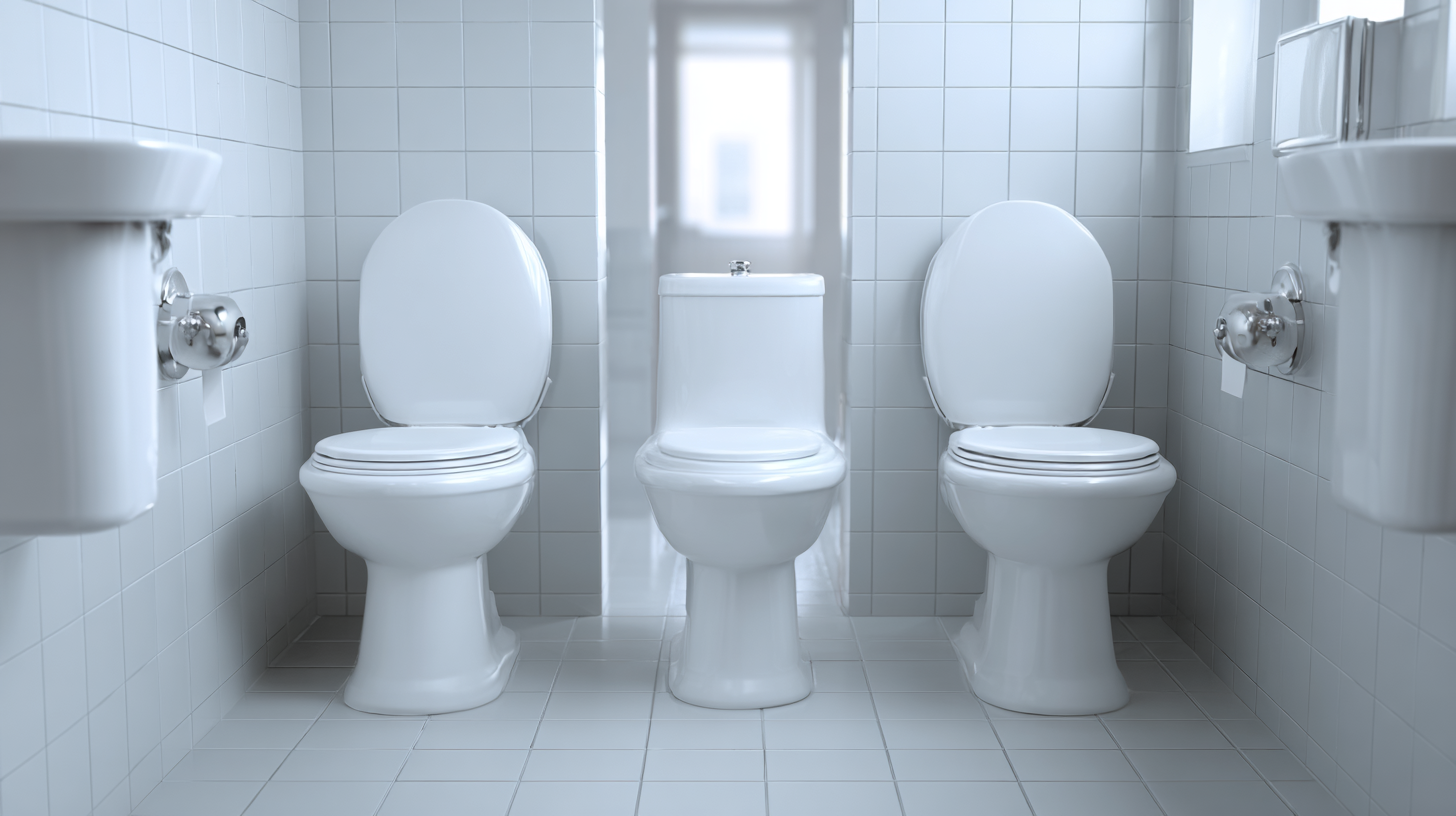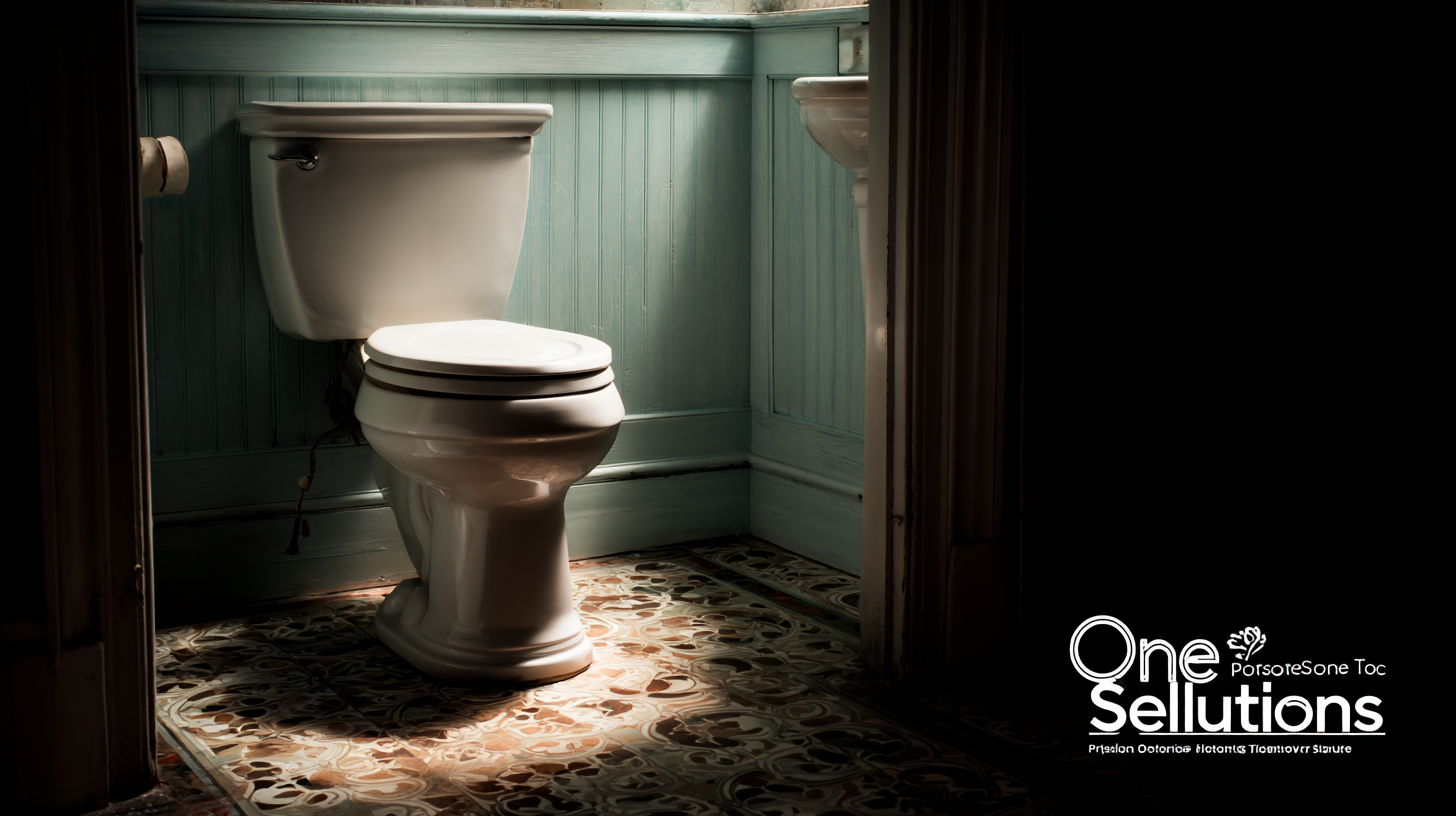Leave Your Message
In the quest for heightened hygiene standards in restroom facilities, the One Piece Seat Toilet has emerged as a leading solution, particularly in addressing the challenges often associated with traditional toilet designs. According to a report by the World Health Organization, inadequate sanitation is a major contributor to health issues globally, affecting approximately 2.3 billion people who lack access to improved sanitation facilities. The seamless design of the One Piece Seat Toilet minimizes crevices where bacteria can thrive, significantly reducing the risk of contamination. As facilities increasingly prioritize cleanliness, durability, and ease of maintenance, understanding the advantages of this modern solution becomes crucial. This ultimate guide will explore the best One Piece Seat Toilet options on the market, examining their role in promoting hygiene and providing a comprehensive overview of how they can effectively meet the needs of various environments.

In recent years, the design and functionality of one-piece toilets have gained substantial attention in the quest for improved hygiene and comfort in restroom facilities. With the hygiene challenges posed by traditional two-piece models, which often feature crevices difficult to clean, one-piece toilet designs have emerged as a solution. According to a study published by the International Journal of Environmental Research and Public Health, approximately 70% of restroom users expressed concerns about cleanliness, highlighting the necessity for toilets that reduce bacterial growth and are easy to maintain.
One-piece toilets not only eliminate the joints between tanks and bowls but also offer a seamless, smooth surface that significantly minimizes dirt accumulation. In a comparative analysis by the American Society of Plumbing Engineers, it was found that buildings incorporating one-piece toilet systems reported a 30% decrease in maintenance and cleaning costs, making them a financially attractive option for facility managers. Furthermore, these toilets often come with advanced features such as touchless flush mechanisms and integrated bidets, which enhance user comfort while promoting water-saving practices, addressing both hygiene and sustainability criteria in modern restroom design.

The market for one-piece seat toilets is experiencing significant growth as hygiene concerns continue to shape consumer choices in restroom facilities. By 2025, the demand for these toilets is expected to soar, propelled by innovations in design and functionality. With their seamless structure, one-piece toilets minimize the crevices where dirt and bacteria can accumulate, making them a popular choice among health-conscious consumers and facilities aiming to enhance cleanliness.
As we look towards the future, industry reports suggest that the global smart toilet market is also poised for substantial expansion, expected to reach approximately $16.09 billion by 2030. This growth underscores a broader trend where hygiene technology, including features like self-cleaning mechanisms and integrated bidets, is increasingly embedded in toilet designs. Such advancements not only promote sanitation but also elevate the user experience, reflecting changing expectations in public and private restrooms. The synergy between one-piece seat toilets and smart technology is setting the stage for a new era in bathroom facilities, merging hygiene with modern convenience.
One-piece toilets have emerged as a vital solution in modern restroom facilities, particularly when addressing rampant bacterial concerns. The seamless design of one-piece toilets minimizes the crevices and joints where germs typically accumulate, thereby enhancing overall hygiene. According to a sanitation fact sheet by the World Health Organization, improved sanitation could lead to a 30% reduction in the incidence of diarrhea-related diseases, which highlights the significance of sanitary toilet systems in public health.
In addition, studies indicate that one-piece toilets are easier to clean compared to two-piece systems, reducing the time and effort needed for maintenance. This ease of cleaning not only keeps restrooms looking pristine but also mitigates the risk of bacterial proliferation. A report from a leading hygiene research organization emphasizes that facilities employing one-piece toilet designs reported a 25% lower bacterial load in comparison to traditional alternatives. By investing in these hygienic solutions, restroom facilities can significantly improve visitor satisfaction and public health outcomes.
When evaluating restroom facilities in commercial settings, the choice between one piece and traditional toilets is pivotal for addressing common hygiene challenges. One piece toilets, with their seamless design, minimize crevices where germs can thrive, promoting better sanitation. This design also facilitates easier cleaning, a fundamental aspect for high-traffic locations where hygiene is paramount. In contrast, traditional toilets, often comprised of multiple components, may present challenges in terms of maintenance and cleanliness, potentially harboring more bacteria.
Recent studies highlight the robust demand for innovative solutions in restroom hygiene, as evident in the increasing market for smart toilets which blend advanced technology with sanitation. Incorporating features like self-cleaning mechanisms and automated functions, these toilets not only enhance user experience but also significantly reduce the likelihood of contamination in public spaces. As businesses aim to create healthier environments, understanding the advantages of one piece toilets over traditional models will be crucial in guiding procurement decisions and improving overall restroom hygiene standards.

As we move towards 2025, the importance of sustainability in restroom facilities has never been more critical. Eco-friendly materials and water efficiency are at the forefront of innovations in One Piece Seat Toilet solutions. According to a report by the American Water Works Association, toilets account for nearly 30% of residential water use, prompting a demand for more efficient models. By integrating dual-flush technologies and optimizing materials, manufacturers are achieving significant reductions in water consumption without sacrificing performance.
Moreover, the use of sustainable materials is revolutionizing toilet construction. A study by the U.S. Environmental Protection Agency indicates that utilizing recycled materials in bathroom fixtures can reduce overall resource consumption by up to 50%. Brands are increasingly shifting towards using biodegradable and recyclable components, helping to minimize landfill waste and support a circular economy. By focusing on sustainability, restroom facilities can tackle common hygiene challenges while also addressing environmental concerns, paving the way for a greener future in sanitation solutions.
| Solution Type | Hygiene Features | Eco-Friendly Materials | Water Efficiency (L per flush) | Sustainability Rating |
|---|---|---|---|---|
| One-Piece Toilet A | Self-cleaning surface, antimicrobial coating | Recycled ceramic, eco-friendly glaze | 4.8 | A++ |
| One-Piece Toilet B | Touchless flush, odor control system | Biodegradable components, recyclable materials | 3.5 | A+ |
| One-Piece Toilet C | Integrated bidet, hygienic flush system | Sustainable bamboo elements, low-waste design | 4.0 | A++ |
| One-Piece Toilet D | Continuous flow design, easy cleaning | Composite materials, eco-resins | 3.2 | B |
